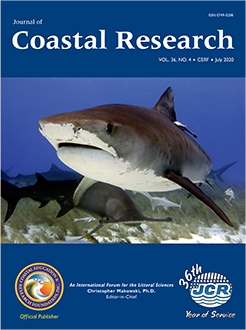Scheffers, A. and Kelletat, D., 2020. Megaboulder movement by superstorms: A geomorphological approach. Journal of Coastal Research, 36(4), 844–856. Coconut Creek (Florida), ISSN 0749-0208.
A longstanding geomorphological debate exists on the capability of high-intensity hurricanes to transport megaboulders. This article considers this debate, with a focus on the Bahamas during the Eemian period when sea levels have been higher. The superstorm hypothesis implies that during a warmer interglacial period, storms of unprecedented intensity would have the ability to dislodge megaboulders, against gravity, and then transport them inland to their current place of deposition, and modelling resulted in strong storms during higher sea levels as the most probable process. In this study, geomorphological arguments are tested that consider the reconstruction of the Eemian coastal landscape, focussing on original dimensions of the boulders and the position of the Eemian cliff more accurately, not excluding tsunamis as a driving force.





